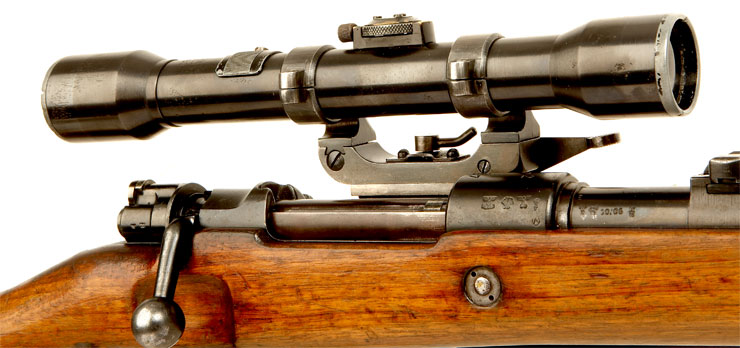
By 1914, the bolt-action rifle had been perfected, and came equipped with a five or 10-round magazine. These new tactics were also helped by advances in the sniper rifle itself. During this period, it was not unusual for a sniper to lie in wait for a shot for days at a time, fire off a few rounds, and then quickly relocate to a new position before they could be detected. Trench warfare provided good hiding places for sharpshooters, and the empty no man’s land between the opposing armies offered a wide field of view. The Western Front of World War One offered the ideal conditions for snipers. (Image source: WikiCommons) The World Wars An American sniper on the Western Front, circa 1918. One of these, a shot taken at 800 yards, killed Union General John Sedgwick at the Battle of Spotsylvania Courthouse. Though rare, the unique hexagon-shaped rifling and bullet of this weapon gave it then-unbeaten accuracy at long ranges, and it made many notable kills. In contrast, the Confederate army looked to the British Whitworth rifle for their snipers. Many Confederate snipers favoured the British-made Whitworth rifle.

The standard rifles of this period were muzzle-loaders, and these had a huge disadvantage in the field: the shooter had to stand up to reload, giving away his position and potentially exposing him to enemy fire. Union snipers preferred the breech-loading Sharps rifle. The most popular sniper rifles of this period varied by army. Union sharpshooters liked the breech-loading Sharps rifle. Still, the combination of several new developments – telescopic sights, but also the percussion-lock rifle and the spin-stabilized Minié ball, meant that snipers could hit targets up to a mile away. These early scopes were rudimentary, offering minimal magnification and were often very hard to zero in the field.

The first telescopic sights were used nearly a century later, during the American Civil War. In the right hands, frontier rifles could be especially deadly. An 18th Century “Kentucky rifle.” Weapons like these were far more accurate than the British infantry musket. The weapons used in this period were little more than standard hunting rifles, but in the hands of a skilled sharpshooter could be very effective. Their skills were used to devastating effect when turned against the British - 200-yard kills were not uncommon. Many of the American soldiers who fought in the Revolution were already skilled marksmen, long accustomed to hunting for their dinner. The equipment and tactics that would later be recognized as sniping made their first appearance in the War of Independence.

(Image source: WikiCommons) The Early Years Union general John Reynolds was killed by a Rebel sharpshooter at the Battle of Gettysburg. The number for a well-trained sniper? 1.3 bullets.

In Afghanistan, almost 250,000 rounds are expended by infantry troops to take out one Taliban fighter. If that sounds like a lot, consider modern statistics. Comparing the number of rounds needed, on average, to kill one enemy combatant is a great way to illustrate the increasing lethality of the sniper.ĭuring World War Two, 25,000 bullets were needed by the average infantry soldier to kill one enemy combatant. This has resulted in the sniper becoming an amazingly efficient soldier. Army sniper will make use of red dot sights, laser rangefinders and night vision capability, all of which enable pin-point accuracy at incredible distances and under the most difficult conditions. In the Civil War, sharpshooters attached their own improvised telescopic sights to their hunting rifles. One of the major driving forces behind the rise of the sniper, and the improved effectiveness of the sniper rifle, has been the ongoing development in optical technology. SNIPERS ARE A very vital part of any modern combat force, yet surprisingly it has taken quite some time for this to be realized.įrom their first appearance during the American Civil War, the techniques and technology of sniping have developed together, with each new technological advance making the sniper deadlier at a greater range. (Image source: WikiCommons) “From their first appearance during the American Civil War, the techniques and technology of sniping have developed together, with each new technological advance making the sniper deadlier at a greater range.” The weapons and tactics of America’s snipers have changed over the decades A Civil War-era marksman trains his weapon on the enemy.


 0 kommentar(er)
0 kommentar(er)
